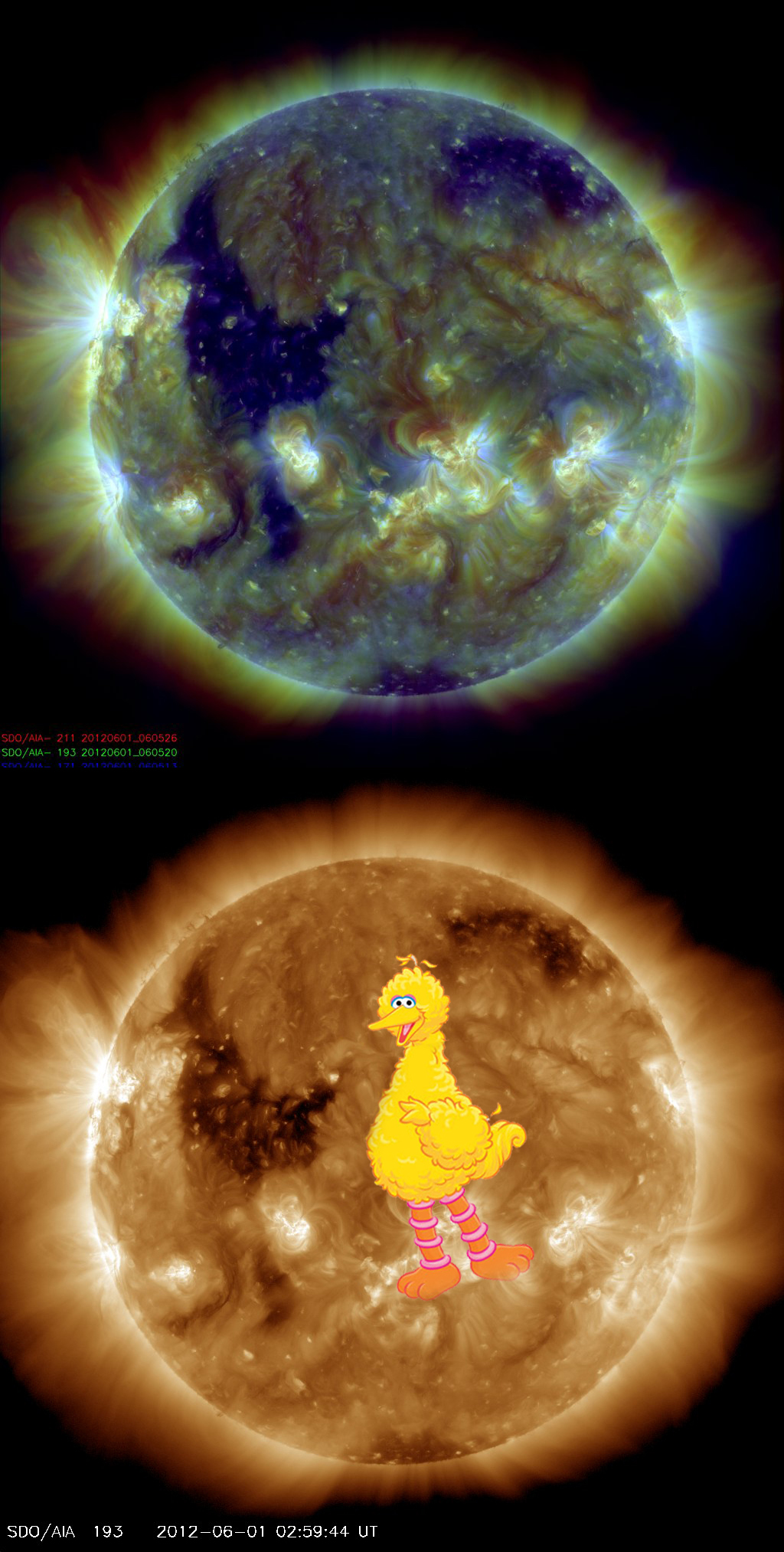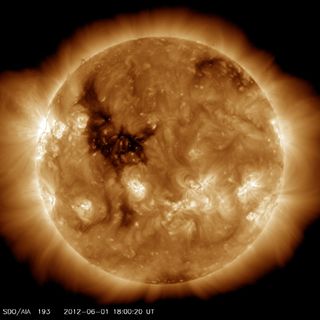
A new photo from a NASA sun-watching spacecraft highlights a huge solar feature that looks a lot like the beloved Big Bird from the children's television show "Sesame Street."
The image, snapped today (June 1) by NASA's Solar Dynamics Observatory (SDO) probe, actually shows a so-called coronal hole — an area where the sun's corona, or outer atmosphere, is dark. But the resemblance to Big Bird, or one of his feathered kin anyway, is uncanny.
"I can't get over how much this looks like Big Bird — but it is a coronal hole on the sun," reads a Twitter post today by Camilla Corona SDO, the spacecraft's rubber chicken mascot.
The rubber chicken's Twitter feed is part of NASA's social media outreach efforts. Officials pasted a picture of the "Sesame Street" character next to the 'Big Bird' coronal hole for comparison.
The image of Big Bird on the sun is an example of pareidolia, which is the tendency of the human brain to recognize animals or other prominent shapes in vague or random images. This view of an elephant's head on Mars is another example.
Coronal holes are associated with "open" magnetic field lines, which extend out into interplanetary space rather than arc back to the solar surface. Coronal holes are often found near the sun's poles, Camilla added, and the high-speed solar wind — a stream of charged particles flowing from the sun's upper atmosphere — is known to originate in them.
The super-speedy solar wind from the 'Big Bird' coronal hole will reach Earth between June 5 and June 7, Camilla said.
Get the Space.com Newsletter
Breaking space news, the latest updates on rocket launches, skywatching events and more!

After remaining relatively quiet for several years, the sun has entered an active phase of its 11-year solar cycle, firing off a number of strong flares and coronal mass ejections (CMEs) — huge clouds of solar plasma — in the past several months.
CMEs that hit Earth inject large amounts of energy into the planet's magnetic field, spawning potentially devastating geomagnetic storms that can disrupt GPS signals, radio communications and power grids for days, researchers say. These storms can also super-charge the northern and southern lights, generating brilliant shows for skywatchers at high latitudes.
Experts think the current cycle, known as Solar Cycle 24, will peak in 2013.
The $850 million SDO spacecraft launched in February 2010. The probe's five-year mission is the cornerstone of a NASA science program called Living with a Star, which aims to help researchers better understand aspects of the sun-Earth system that affect our lives and society.
You can follow SPACE.com senior writer Mike Wall on Twitter: @michaeldwall. Follow SPACE.com for the latest in space science and exploration news on Twitter @Spacedotcom and on Facebook.
Join our Space Forums to keep talking space on the latest missions, night sky and more! And if you have a news tip, correction or comment, let us know at: community@space.com.

Michael Wall is a Senior Space Writer with Space.com and joined the team in 2010. He primarily covers exoplanets, spaceflight and military space, but has been known to dabble in the space art beat. His book about the search for alien life, "Out There," was published on Nov. 13, 2018. Before becoming a science writer, Michael worked as a herpetologist and wildlife biologist. He has a Ph.D. in evolutionary biology from the University of Sydney, Australia, a bachelor's degree from the University of Arizona, and a graduate certificate in science writing from the University of California, Santa Cruz. To find out what his latest project is, you can follow Michael on Twitter.